- Home
- Jane Smiley
A Good Horse Page 3
A Good Horse Read online
Page 3
We took Jack to the pen, which at least was on the west side of the barn and a little in the shade. I took off the halter. Jack trotted around me, tossing his head, then stopped at the gate and gave Jem a sniff or two. Jem stood quietly, as usual, and let Jack smell his hands and his shirt, then he stroked his neck and gently waved him off. Jack came toward me, but then something caught his eye and he snorted and kicked out. I went out of the pen and Jem came in. He had his coil of rope. For a few minutes, he encouraged Jack in his running around. Bit by bit, Jack started paying attention to him, and pretty soon he was trotting his best trot, slightly curved away from Jem, his head and neck and back and even his tail loose and relaxed. Jem let him do this for a while, then turned his body so that Jack came into the center.
Jem uncoiled his rope and laid the loop—a fairly small loop—on the ground. After a moment, Jack stepped his left foot into it, and Jem tightened the rope around his ankle. Jack tried to pull his foot away, but only for a second. Almost immediately, he seemed to remember the lesson from three days before. He put his hoof down flat on the ground and looked at Jem. Jem tightened the rope a little. After a moment of thought, Jack picked up his foot and set it down again, a little closer to Jem. Jem loosened the rope and gave Jack a quick pat on the neck. Then he tightened the rope again. This time, Jack picked up his foot right away and held it up until Jem pulled it with the rope. It was almost as if he were guiding Jack to put his foot down in exactly the right place. I said, “Why are you doing that?”
He did it one more time—tension on the rope, foot comes up, tension on the rope, foot sets down a step ahead. Of course, the other feet were following along, but Jack and Jem were only paying attention to the foot with the rope around the ankle.
Jem said, “Well, for one thing, if he gets something wrapped around his foot—say, out in the pasture—that thing isn’t always going to stay in one place. There are lots of ways for a horse to get caught or stuck. Sometimes, he needs to react by going along, not just by standing still. But in addition to that, this is another thing I’m asking him to do. I’m asking him to come along with me. It’s the same as a halter or a rope around his neck, but it’s around his foot. That’s worth knowing.”
“You mean, no matter what, when you want him to come along with you, he’s got to come along with you.”
“That’s right, Miss Abby,” said Jem.
They worked at this for another few minutes. Jack got used to it. He stopped looking down at his foot, and his ears stopped flicking back and forth, and pretty soon, as soon as he felt the pull of the rope, he stepped forward until Jem turned toward him and in that way told him not to.
After the left front came the right front. A horse, my daddy says, has two brains, a left brain and a right brain, and the two aren’t always as connected as they could be. Sometimes, the horse will know something perfectly well on the right and then not know the same thing at all on the left, like taking the left lead at the canter or taking the right lead. Daddy always said that a horse being right-handed or left-handed came from how they lay inside the mare before they were born. I don’t know if that is true. But at any rate, you had to teach the right side and then you had to teach the left side, and vice versa, in order for both sides of the brain, and both sides of the body, to develop equally.
Just a few days earlier, maybe a day or two before my birthday, I had said this very thing to Kyle Gonzalez, because Kyle was writing out our English sentences in study hall with his left hand. I happened to know from when we did our mission project that Kyle was right-handed, but when I asked him about it, he said he was developing the right side of his brain, and so he was writing with his left hand every other day and with his right hand every other day. At home, he practiced hitting tennis balls against the back wall of the garage, right-handed one day and left-handed the next day. Kyle Gonzalez thought of things to do that no one else ever thought of. But he seemed interested when I told him about horses, interested in a Kyle sort of way, where you knew he was going to go look that up when he got the chance, and then he would put that idea away in his brain somewhere in case he needed it at some future date.
When Jem put the rope around Jack’s right ankle, he seemed less able to do what Jem wanted him to do than with the left. The first time, he tried to pull his ankle away, and even reared up a little, but Jem looked like he hardly even noticed. He just held the rope steady until Jack decided to come down again. Then Jack tried to back up, but Jem didn’t let him pull his foot away, and so Jack just put it down where it had been before.
Then Jack did a funny thing—he kept his front feet where they were but leaned way back, like he was a cat, stretching. Still, Jem didn’t do much. He was waiting for Jack to figure out that stepping forward was easier than trying to get away. There was a long minute, and then Jack picked up the right foot with the rope around it and took a step. Then the other feet followed, and pretty soon, he was walking around the pen, following Jem. He walked fairly evenly, but he never got as smooth as he had on the left—sometimes, he looked down and flicked his ears, as if to say, “What is this thing around my ankle?” It made me laugh.
We must have worked on that for fifteen minutes or so, then Jem put the rope around his neck again and worked him around the pen until he was moving along easily and happily. After he was finished, I put the halter on him and rubbed him down with the chamois. Jem said, “When you’re doing that, you could say, ‘Shhhh, shhhhh,’ in a low voice.” When I tried it, Jack put his head down and got really quiet. After a minute or two, it made me feel kind of sleepy, too. I even put my arm over Jack’s back and closed my eyes for a second, not something you would think you wanted to do with a colt, but for that second, I felt like we were taking a little bitty nap. Then I smoothed the chamois over his face and around his ears. He yawned twice while I was taking him to the gelding pasture.
Jem Jarrow called out a good-bye, and I thought maybe these lessons were the best we’d ever had, but it is also true that some things you do just get better and better, and every time you do them, it seems like that was the best time ever.
By the time Jack and I were finished, it was starting to get hot, really hot, even though it wasn’t ten a.m. when I went back to the house for a glass of water. I saw that Mom had taken the thermometer inside “for a rest,” which she sometimes did if she couldn’t stand looking at it anymore. She said, “We can feel if it gets above a hundred. We don’t have to know it.”
She was ready, though—just putting on her boots. I was going to take Lester and she was going to take Lincoln, and we were going to ride down to the crick and back up again. I changed into a T-shirt.
Everything was just normal (though hot) while we were going down to the crick. Mom was in front on Lincoln, who was an easygoing, sure-footed horse, reliable enough so that Mom actually enjoyed riding him, and I was on Lester, who usually had more spirit and wanted to be in the lead but for today had given up all his opinions because of the heat. He was content to plod along behind Lincoln and keep his eye out for the stray leaf or blade of golden grass that he might enjoy. We were almost to the crick when Mom said, “What’s that?”
I looked around, but I didn’t see anything.
She said, “Over there. Across the crick. It went behind that tree.”
I turned my head and saw a movement, but only that. Mom sat up and Lincoln came to a halt. Whatever it was couldn’t be much, because the horses didn’t care one way or the other. Lester turned his head, and his ears went forward, but his body didn’t tense up. And then a head peeked out from behind the tree. It was a brown head with flop ears and a white stripe running up between its eyes. It looked at us and went behind the tree again. Mom said, “Someone’s dog! Way out here! That one must be really lost.” She urged Lincoln toward the crick and Lester followed. The dog did not appear on either side of the tree. When both horses were standing in the water, Mom put her hand out toward me and said, “Shh.”
We waited.
&nb
sp; Lester dropped his head and took a drink, then pricked his ears. I saw the dog after he did—it had moved back into the shadows of the trees, but it was still looking at us. When Lincoln snorted, it tensed as if it was going to run away, but then Lincoln didn’t move, so the dog didn’t move, either.
“Big boy,” said Mom. “Looks like a shepherd mix.”
We sat there.
Mom loved dogs. My grandfather Jasper Rankin had all kinds of dogs—he would do any type of hunting, but he liked trailing things the best. Usually, it was raccoons, and some of his dogs were coonhounds, but he would trail anything. Once he tracked a little girl who ran away from her kindergarten and got lost, and another time he tracked two men who robbed a bank. Often, in deer-hunting season, someone who wounded a deer but didn’t kill it would call my grandfather and have him find the deer. Once, he took his dogs up to Wisconsin and tracked a couple of bears. When I was a little girl in Oklahoma, I was used to being around lots of dogs; once, when I was two, they found me on Christmas afternoon, worn out and sleeping in the back hall among the coonhounds. I’m sure I was very warm, but I didn’t remember it.
Daddy liked dogs, too, but he was allergic to them, and so he had never had a dog after he was about seven, and my grandmother and grandfather Lovitt figured out that it was the dogs that were making Daddy wheeze and cough. Once he and Mom got married, my grandparents got a dog again, but whenever Daddy visited them, the dog had to go out to the garage. He was the only person we knew who was allergic to dogs. He couldn’t visit my Rankin grandparents at all—they had to come to our house if they wanted to see us.
Mom gave Lincoln a little kick, and he walked to the edge of the crick. He was just about to step up onto the bank, but Mom didn’t let him. She leaned forward in the saddle. The dog hadn’t moved—in fact, he was sitting, though sitting alertly, as if he could move if he had to. Mom said, in a low voice, “Hey, Buddy, hey, Buddy, hey, Buddy.” The dog’s ears were forward, and he was looking at her. He was as big as a pointer or a retriever, at least. Bigger. Mom said, “What’s your name what’s your name what’s your name.” Then she said to me, “Pretty dog. Not a mutt, I don’t think.”
We watched him for a couple more minutes, then Mom turned Lincoln’s head down the crick, and we walked along, over the gravel bed and in the water. It wasn’t cool, but the shade of the trees and the splash of the water made it seem not that hot. Mom said, “Look to your right.”
I did. The dog was making his way through the trees about twenty feet from the bank, staying out of the sun. When we stopped, the dog stopped. When we started walking again, the dog did, too. Finally, we came to a fence that defined the end of our property—it was barbed wire and built across the crick. That big ranch was on the other side of it, and it prevented Mr. Jordan’s cows from coming onto our property. Mom turned and had Lincoln climb the bank. I followed on Lester. We started walking up the hill toward the gelding pasture, and I could see out of the corner of my eye that the dog went down into the crick, took a drink, and then jumped up the bank. As we came up the hill, the dog followed behind. We tried a little trot. The dog trotted after us. We slowed down again. The dog slowed down. We turned to the left and walked along the end of the gelding pasture. The dog first sat down and then, just as we were going around the hill, trotted to catch up. Mom took off her straw hat and then put it on again. Lincoln and Lester kept walking. I turned around and stared at the dog. It was a strange-looking dog, with a hairy face like a terrier and a hairy body. Even though the head had a brown mask with a white blaze, the body was mostly white, with speckles, though there was one brown spot, like a lopsided saddle, over his back. He followed us all the way up the hill and then sat down just beyond the buildings, staring at us. After we had put the horses away and come back out of the barn, he was still sitting there. The geldings were looking at him, and so were the mares, but they didn’t seem nervous. Mom said, “I think that dog has been here before.” Then she said, “I think we have a dog.”
That was a good thought.
Log Jump
Hay Bale
Brush
Chapter 3
I AM SURE DADDY SAW THE DOG, TOO, SINCE FOR THE NEXT FEW days, if I looked in the right direction, I would see it there, usually sitting and looking back at me. If you drew a circle around the barn and the house and Mom’s garden and Jack’s old pen, that would be the circle the dog did not enter, but at any time it could be just outside that circle, lying down, sitting, walking, making itself at home. I almost had the feeling that the more it walked around the circle looking at us, the more we started to belong to it, in its own mind, but it was being cautious and thinking if it entered the circle too soon, it would be kicked out, and it would have been. Mom and I didn’t mention the dog because we knew that the only chance of having it around was Daddy getting used to it, and having no one to argue with about it. The dog would of course never come into the house. But maybe it could, someday, come into the barn.
On Monday after Jem Jarrow had given me my second lesson, I came home from school to discover that Daddy had set up as good a jumping course as he could in the arena, and that Black George was all tacked up and waiting for me. I went right in the house to change into my riding clothes, and as I did, Daddy called, “Bring out that list!”
He meant the list I had made of the things I was supposed to do when I was jumping a course. Sometimes, he made me go over that list line by line, just to make sure that we were getting the most out of our times with Miss Slater. I put on my boots and found the list in my horse notebook. The weather had broken; it was about fifteen degrees cooler than it had been, so I knew we had plenty of work to do.
Daddy was holding Black George, and I handed him the list, which he read while I recited:
“Ride the course, not the jumps.”
“What does that mean?”
“Well, if I think of the jumps too much, I will look at each one and forget to go forward, but if I think of where I’m going, the jumps will get jumped automatically.”
“Okay. Number 2.”
“Keep the horse level, especially through the corners.”
“What does that mean?”
“I have to sit up and a little back, and make sure that his front legs are moving evenly and his shoulders are the same height.”
“Why?”
“Because he could slip otherwise, or come into a jump off-balance.”
“Okay. Three.”
“Look ahead ten strides, not two or five.”
“That’s about …”
“That’s about keeping going, like the first one, but also about being prepared and knowing where you are going.”
“Four.”
“Ride to the middle of every fence.”
“Why?”
“Because getting to the middle is hard, but if you try to get there, there’s a better chance you will at least get close.”
“Yes,” said Daddy. “And also, the horse can’t see the fence as you approach it, because his eyes are set to either side of his head. If you ride to the middle of the fence, he has a better sense of where he is and when and how to jump.”
“He can’t see the fence?”
“Not while he’s jumping it.”
I didn’t know what to think about this. It was a little scary. On the other hand, Black George didn’t seem to care whether he could see the fence or not—he was always right about where it was. I said, “Okay.”
“Five?”
“Wait.”
“How can you wait when you are galloping?”
“Well, I don’t want to get my body in front of the horse’s body. I am waiting for him rather than leaning out ahead of him. Also, his strides should be even, so I don’t want to get him to change his strides by making him go faster.”
“Good. You sound like you’ve passed this test before.”
“I have. Six is like five: maintain a rhythm.”
“Why is that?”
“Nobody gets
nervous.”
“Right—”
“Or, if somebody is nervous, the other one doesn’t realize it.”
Daddy laughed.
I said, “Seven should be one. Look up, never down.”
“Why is that?”
“ ’Cause if you look down, you can fall down.”
“But also …”
“When you are looking down, you are looking at the jumps and riding the jumps, not the course. When you are looking up, you are riding the course, not the jumps.”
“Okay!” said Daddy. “A-plus!” And he threw me onto Black George.
He must have spent the whole afternoon setting up the course, because he had also taken the tractor and dragged the entire arena. The sand was grooved and even all around. There were eight jumps, and every one of them even weirder than usual.
They weren’t all that high, but Black George and I had never seen any of them quite like this before. Daddy had set out three hay bales end to end and on top of them arranged a row of books. A few strides past that was a pair of stools holding up a two-by-four or something like that, with four pairs of his jeans hanging over them. At the far curve of the arena was the picket fence he liked to use, but with branches woven between the pickets. He had dragged in a log from somewhere—it was higher on the sides than in the middle, which would make us jump the middle. There were three sawhorses set end to end, their legs wrapped in Christmas ribbon. A row of Mom’s Mexican pots with flowers growing out of them. A row of kitchen chairs, but with one of my stuffed animals sitting in each seat—panda, giraffe, Raggedy Ann, floppy dog, rabbit. The last one was almost regular—he had taken a pair of jump standards that we had and set three poles across it, but he had dangled kitchen spoons from the top pole so that they clanked against the poles beneath.

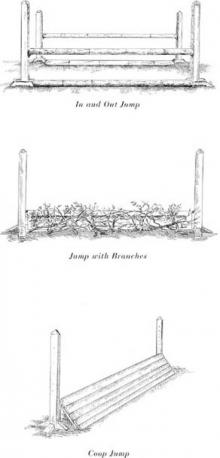 The Georges and the Jewels
The Georges and the Jewels Pie in the Sky: Book Four of the Horses of Oak Valley Ranch
Pie in the Sky: Book Four of the Horses of Oak Valley Ranch Duplicate Keys
Duplicate Keys Charles Dickens
Charles Dickens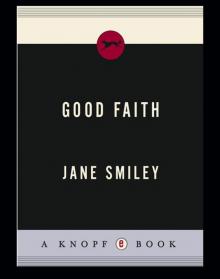 Good Faith
Good Faith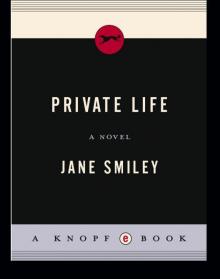 Private Life
Private Life A Thousand Acres: A Novel
A Thousand Acres: A Novel The Greenlanders
The Greenlanders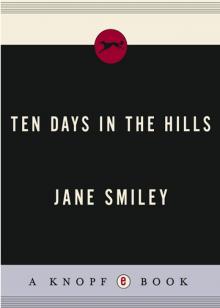 Ten Days in the Hills
Ten Days in the Hills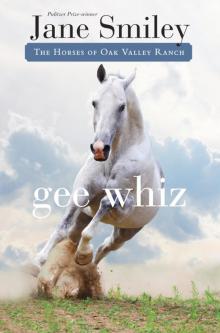 Gee Whiz: Book Five of the Horses of Oak Valley Ranch
Gee Whiz: Book Five of the Horses of Oak Valley Ranch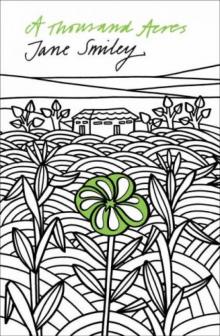 A Thousand Acres
A Thousand Acres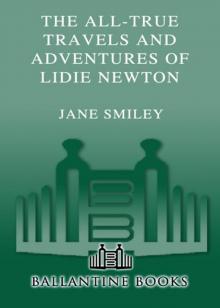 The All-True Travels and Adventures of Lidie Newton
The All-True Travels and Adventures of Lidie Newton Ordinary Love and Good Will
Ordinary Love and Good Will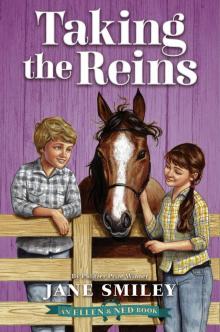 Taking the Reins (An Ellen & Ned Book)
Taking the Reins (An Ellen & Ned Book) The Man Who Invented the Computer
The Man Who Invented the Computer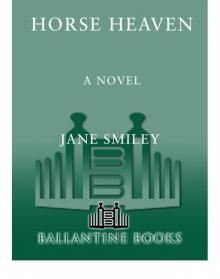 Horse Heaven
Horse Heaven The Age of Grief
The Age of Grief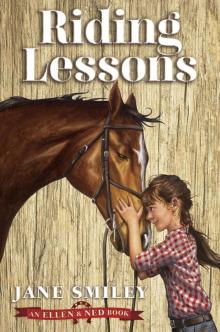 Riding Lessons
Riding Lessons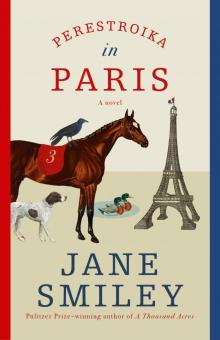 Perestroika in Paris
Perestroika in Paris A Good Horse: Book Two of the Horses of Oak Valley Ranch
A Good Horse: Book Two of the Horses of Oak Valley Ranch Saddles & Secrets (An Ellen & Ned Book)
Saddles & Secrets (An Ellen & Ned Book)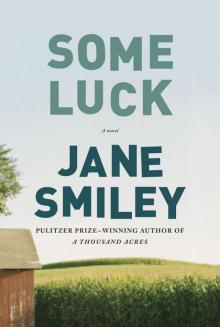 Some Luck: A Novel
Some Luck: A Novel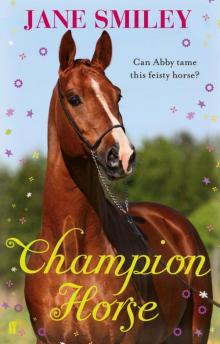 Champion Horse
Champion Horse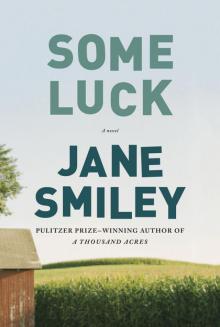 Some Luck
Some Luck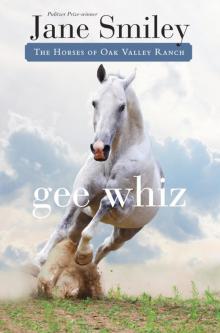 Gee Whiz
Gee Whiz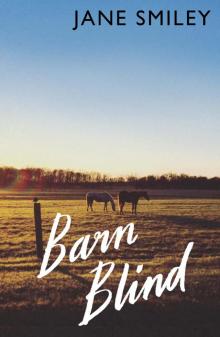 Barn Blind
Barn Blind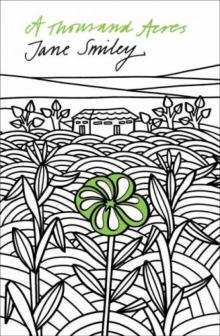 A Thousand Acres (1992 Pulitzer Prize)
A Thousand Acres (1992 Pulitzer Prize) Pie in the Sky
Pie in the Sky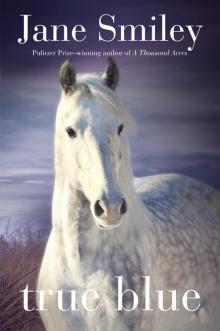 True Blue
True Blue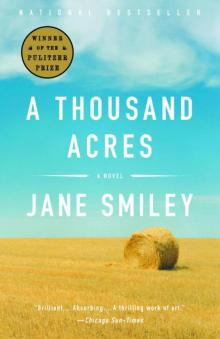 A Thousand Acres_A Novel
A Thousand Acres_A Novel A Good Horse
A Good Horse